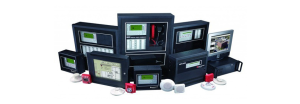fire floors
For certain types of fires, firefighting foam is used instead of water. There are two types of firefighting foam: Class A and Class B. Class A is used on conventional combustibles to reduce the surface tension of water, allowing for better fuel saturation, and Class B is used on flammable liquid fires.
Protein
The protein produces a very stable foam. However, care must be taken when using foam as flammable liquids can surround it. Protein-based foams should be sprayed as gently as possible.
Protein foam
AFFF floor
When using foam for fire suppression, firefighters must know which fuel they are dealing with, as some firefighting foams are not suitable for polar or alcohol solvents. To gain an understanding of the large number of options available for As modern firefighters, we need to know the different mechanical foam concentrates that are most commonly used in today’s world. These concentrates include the following:
FoamAFFF
Fire floor (1-46) – AFFF
Fire-fighting foam (AFFF) is a type of fire floors foam for fires caused by flammable liquids, such as alcohols, oxygenated hydrocarbons, monomers and other organic solvents. Its main feature is the formation of a resistant and flexible coating when in contact with the flammable liquid surface.
fire floors
Title | value / property |
|---|---|
Appearance | liquid |
Color | light yellow |
Density (gr/cc) at 20°C | 1.05 ± 0.02 |
pH at 20°C | 1±7 |
Viscosity at 20°C | 12 ± 5 |
freezing point (degrees Celsius) | -7 to -12 |
the extent | 8 – 12 |
This foam forms an aqueous layer on the surface of the flammable liquid. This foam extinguishes the fire by neutralizing the vapors that feed the fire. AFFF has unparalleled fire control speed.
Alcohol Resistant AFFF (AR-AFFF)
AR-AFFF is a foam designed to overcome the weakness of AFFF against polar solvent or alcohol fires. Since polar solvents/alcohols mix with water, they easily break down and remove the AFFF coating. AR-AFFF adds an additional polymer to its base concentrate that creates a physical membrane/barrier between the fuel source and the foam coating.
Detergent synthetic foams
These foams are types with medium or high expansion. They are mainly used in places where fire volume control is required, such as warehouses or basements. Medium or high expansion synthetic materials can be used to quickly fill an entire chamber with very light, expanded foam bubbles.
Fluoroprotein
Fluoroprotein is more resistant to fuel contamination and is suitable for fires in hydrocarbon storage tanks. The foam can be injected directly into the base of the tank, where it floats unhindered to the surface and covers surface flames.
Fire fighting foam (1-12) – 3% fluoroprotein
Fluoroprotein foam (12-1) is an effective and economical protein foam, whose main feature is the rapid fire suppression and fire resistance that it shows. This foam creates a resistant coating of bubbles on the surface of hydrocarbon fires and other flammable liquids.
fire floors
Appearance | liquid |
|---|---|
Color | dark brown |
Density (gr/cc) at 20°C | 1.18±0.02 |
pH at 20°C | 0.5 ± 7 |
Viscosity at 20°C | 7 ± 21 |
freezing point (degrees Celsius) | -7 to -12 |
Sediment | 0.2 |
the extent | 8 – 12 |
دیدگاه خود را با ما در میان بگذارید














